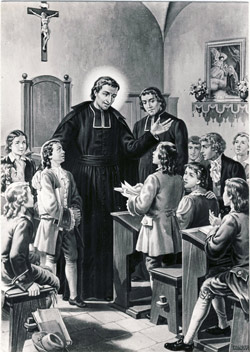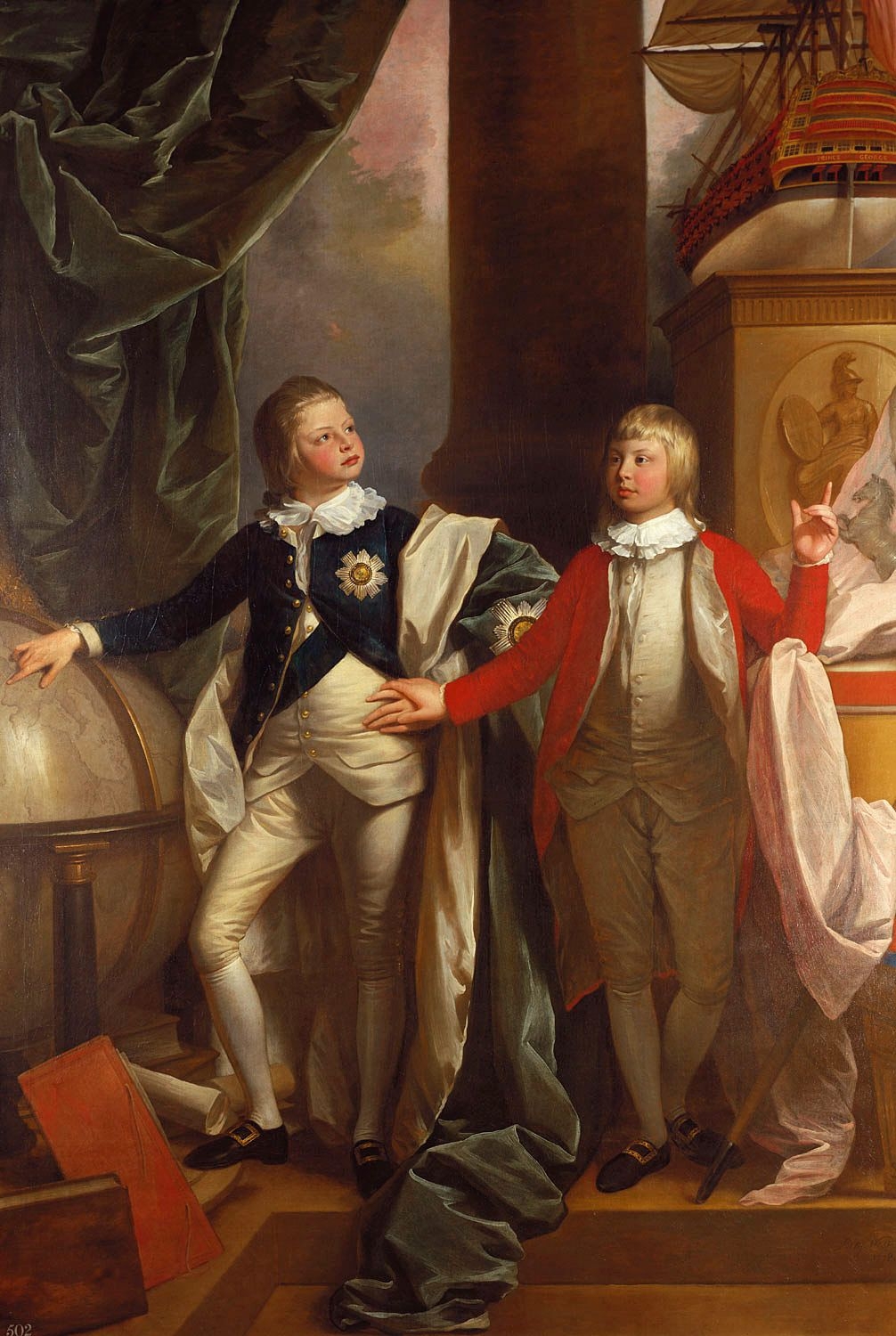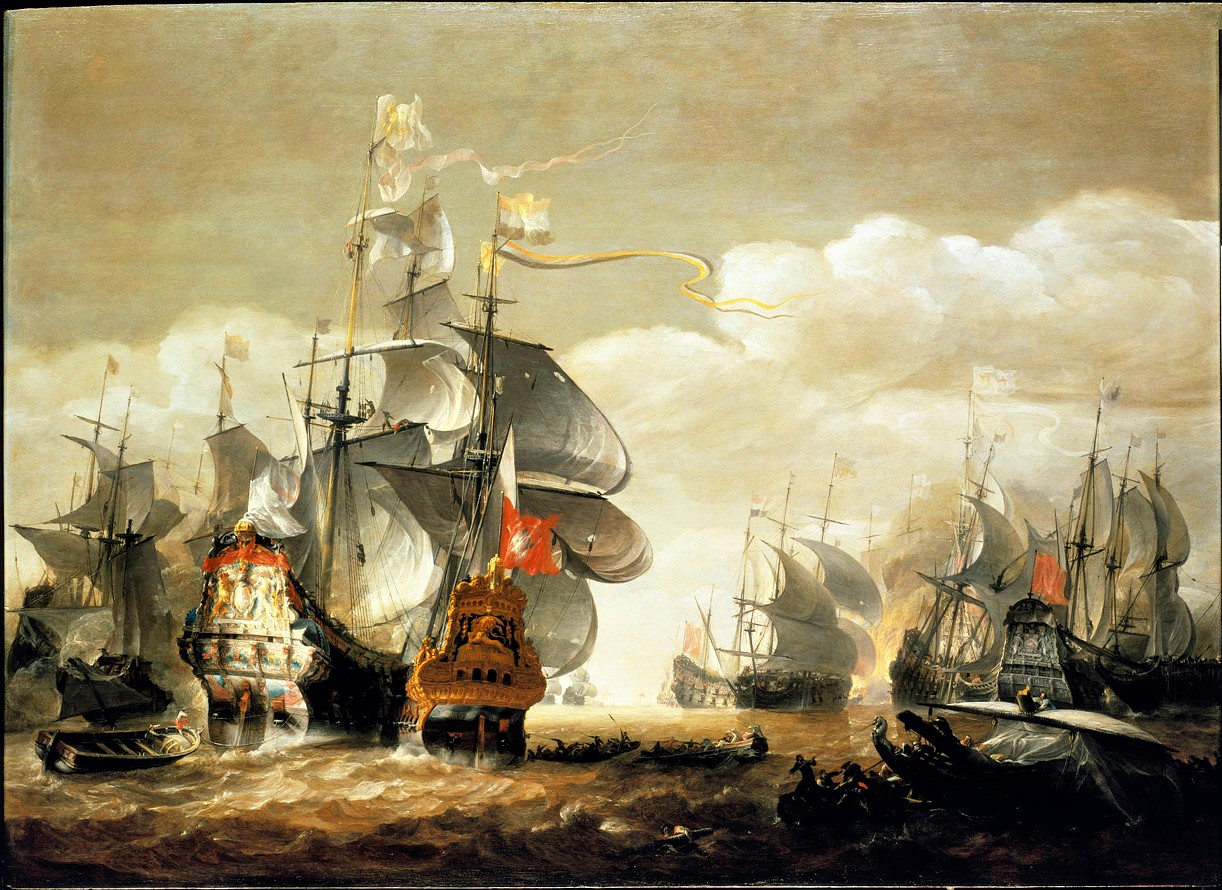|
Portrait Of James, Duke Of York
''Portrait of James, Duke of York'' is a 1673 portrait painting by the French artist Henri Gascar depicting the future James II of England, then Duke of York. James is portrayed in Baroque style in Roman clothing in the style of Mars, the god of war. He stands in a pavilion with his flagship the ''Royal Prince'' in the background. The pageboy on the right was traditionally described as John Churchill, the future Duke of Marlborough, although by the time the painting was produced Churchill was an adult and serving on the continent. James was Lord High Admiral during the reign of his brother Charles and had commanded the Royal Navy at the Battle of Lowestoft in 1665 and Battle of Solebay in 1672 during the Anglo-Dutch Wars. Today the painting is in the collection of the National Maritime Museum in Greenwich having been presented to Greenwich Hospital by William IV in 1835. See also * '' Portrait of James II of England'', a 1684 portrait by Godfrey Kneller Sir Godfrey Kne ... [...More Info...] [...Related Items...] OR: [Wikipedia] [Google] [Baidu] |
Henri Gascar
Henri Gascar ( – 1 Jan 1701) was a French painter who achieved artistic success in Kingdom of England, England during the reign of Charles II of England, Charles II. He painted many leading ladies at court, including several of the Royal mistress, King's mistresses, before returning to Paris. He subsequently relocated to Rome, where he died in 1701. Life and work Gascar was born in Paris, the son of Pierre Gascar, a minor painter and sculptor. Gascar came to England about 1674, probably at the behest of Louise de Keroualle, Duchess of Portsmouth, Charles II's favourite mistress. Gascar (or Gascard, as he seems to have spelt his name at first) was already known as a skillful portrait-painter; among the portraits already painted by him was that of Nicolas de Lafond, author of the "Gazette of Holland", painted in 1667, and engraved by Peter Lombart. The patronage of the Duchess of Portsmouth ensured Gascar a rapid success in England. His flamboyant style, contrasting with th ... [...More Info...] [...Related Items...] OR: [Wikipedia] [Google] [Baidu] |
Duke Of Marlborough
General John Churchill, 1st Duke of Marlborough, 1st Prince of Mindelheim, 1st Count of Nellenburg, Prince of the Holy Roman Empire, (26 May 1650 – 16 June 1722 O.S.) was a British army officer and statesman. From a gentry family, he served as a page at the court of the House of Stuart under James, Duke of York, through the 1670s and early 1680s, earning military and political advancement through his courage and diplomatic skill. He is known for never having lost a battle. Churchill's role in defeating the Monmouth Rebellion in 1685 helped secure James on the throne, but he was a key player in the military conspiracy that led to James being deposed during the Glorious Revolution. Rewarded by William III with the title Earl of Marlborough, persistent charges of Jacobitism led to his fall from office and temporary imprisonment in the Tower of London. William recognised his abilities by appointing him as his deputy in Southern Netherlands (modern-day Belgium) before the ... [...More Info...] [...Related Items...] OR: [Wikipedia] [Google] [Baidu] |
Paintings In Royal Museums Greenwich
Painting is a Visual arts, visual art, which is characterized by the practice of applying paint, pigment, color or other medium to a solid surface (called "matrix" or "Support (art), support"). The medium is commonly applied to the base with a brush. Other implements, such as palette knives, sponges, airbrushes, the artist's fingers, or even a dripping technique that uses gravity may be used. One who produces paintings is called a painter. In art, the term "painting" describes both the act and the result of the action (the final work is called "a painting"). The support for paintings includes such surfaces as walls, paper, canvas, wood, glass, lacquer, pottery, leaf, copper and concrete, and the painting may incorporate other materials, in single or multiple form, including sand, clay, paper, cardboard, newspaper, plaster, gold leaf, and even entire objects. Painting is an important form of visual arts, visual art, bringing in elements such as drawing, Composition (visual art ... [...More Info...] [...Related Items...] OR: [Wikipedia] [Google] [Baidu] |
1673 Paintings
Events January–March * January 22 – Impersonator Mary Carleton is hanged at Newgate Prison in London, for multiple thefts and returning from penal transportation. * February 10 – Molière's ''comédie-ballet'' ''The Imaginary Invalid'' premiers in Paris. During the fourth performance, on February 17, the playwright, playing the title rôle, collapses on stage, dying soon after. * March 29 – Test Act: Roman Catholics and others who refuse to receive the sacrament of the Church of England cannot vote, hold public office, preach, teach, attend the universities or assemble for meetings in England. On June 12, the king's Catholic brother, James, Duke of York, is forced to resign the office of Lord High Admiral because of the Act. April–June * April 27 – ''Cadmus et Hermione'', the first opera written by Jean-Baptiste Lully, premières at the Paris Opera in France. * May 17 – In America, trader Louis Joliet and Jesuit missionary- ... [...More Info...] [...Related Items...] OR: [Wikipedia] [Google] [Baidu] |
Godfrey Kneller
Sir Godfrey Kneller, 1st Baronet (born Gottfried Kniller; 8 August 1646 – 19 October 1723) was a German-born British painter. The leading Portrait painting, portraitist in England during the late Stuart period, Stuart and early Georgian eras, he served as court painter to successive Monarchy of the United Kingdom, English and British monarchs, including Charles II of England and George I of Great Britain. Kneller also painted scientists such as Isaac Newton, foreign monarchs such as Louis XIV of France and visitors to England such as Michael Shen Fu-Tsung. A pioneer of the kit-cat portrait, he was also commissioned by William III of England to paint eight "Hampton Court Beauties" to match a similar series of paintings of Charles II's "Windsor Beauties" that had been painted by Kneller's predecessor as court painter, Peter Lely. Early life Kneller was born Gottfried Kniller in the Free City of Lübeck, the son of Zacharias Kniller, a portrait painter.George Cokayne, Cokayne, ... [...More Info...] [...Related Items...] OR: [Wikipedia] [Google] [Baidu] |
Portrait Of James II Of England
''Portrait of James II of England'' is a 1684 portrait painting by the German-born British artist Godfrey Kneller. It depicts the future James II, then Duke of York and heir to his brother Charles II. He is shown dressed as Lord High Admiral, a position he had been forced to resign from during the Exclusion Crisis of 1673 but had lately been effectively restored to by his brother during the Tory Reaction of the early 1680s. The crown, orb and sceptre were added in after he became king. The following year James succeeded his brother but only reigned until 1688 when he was overthrown in the Glorious Revolution. He spent the remainder of his life in France and Ireland as his Jacobite supporters attempted to restore him to the throne. Today it is in the collection of the National Portrait Gallery in London, having been acquired in 1882. Isaac Beckett produced a mezzotint based on Kneller's portrait.https://www.britishmuseum.org/collection/object/P_1902-1011-118 See also * ''P ... [...More Info...] [...Related Items...] OR: [Wikipedia] [Google] [Baidu] |
William IV Of The United Kingdom
William IV (William Henry; 21 August 1765 – 20 June 1837) was King of the United Kingdom of Great Britain and Ireland and King of Hanover from 26 June 1830 until his death in 1837. The third son of George III, William succeeded his elder brother George IV, becoming the last king and penultimate monarch of Britain's House of Hanover. William served in the Royal Navy in his youth, spending time in British North America and the Caribbean, and was later nicknamed the "Sailor King". In 1789, he was created Duke of Clarence and St Andrews. Between 1791 and 1811, he cohabited with the actress Dorothea Jordan, with whom he had ten children. In 1818, he married Princess Adelaide of Saxe-Meiningen; William was not known to have had mistresses during their marriage. In 1827, he was appointed Britain's Lord High Admiral, the first since 1709. As his two elder brothers died without leaving legitimate issue, William inherited the throne when he was 64 years old. H ... [...More Info...] [...Related Items...] OR: [Wikipedia] [Google] [Baidu] |
Greenwich Hospital, London
Greenwich Hospital was a permanent home for retired sailors of the Royal Navy, which operated from 1692 to 1869. Its buildings, initially Greenwich Palace, in Greenwich, London, were later used by the Royal Naval College, Greenwich and the University of Greenwich, and are now known as the Old Royal Naval College. The word "hospital" was used in its original sense of a place providing hospitality for those in need of it, and did not refer to medical care, although the buildings included an infirmary which, after Greenwich Hospital closed, operated as Dreadnought Seaman's Hospital until 1986. The foundation which operated the hospital still exists, for the benefit of former Royal Navy personnel and their dependants. It now provides sheltered housing on other sites. History The hospital was created as the Royal Hospital for Seamen at Greenwich on the instructions of Mary II of England, Queen Mary II, who had been inspired by the sight of wounded sailors returning from the Battles ... [...More Info...] [...Related Items...] OR: [Wikipedia] [Google] [Baidu] |
Battle Of Solebay
The Battle of Solebay took place on 6 June 1672 New Style, during the Third Anglo-Dutch War, near Southwold, Suffolk, in eastern England. A Dutch States Navy, Dutch fleet under Michiel de Ruyter attacked a combined Kingdom of England, Anglo-Kingdom of France, French force in one of the largest naval battles of the age of sail. Fighting continued much of the day, but ended at sunset without a clear victory. However, the scattered Allied fleet had suffered far more damage and was forced to abandon any plans to land troops on the Dutch coast. Prelude In 1672, both France and England declared war on the Dutch Republic, on the 6 and 7 April respectively. Johan de Witt, the Dutch Grand Pensionary, still harbored some hope for successful negotiations, especially with the support of influential anti-Catholic English figures such as Sir William Temple and the Edward Montagu, 1st Earl of Sandwich, Earl of Sandwich. However, Louis XIV of France had already revealed his true intentions durin ... [...More Info...] [...Related Items...] OR: [Wikipedia] [Google] [Baidu] |
Battle Of Lowestoft
The Battle of Lowestoft took place on during the Second Anglo-Dutch War. A fleet of more than a hundred ships of the Dutch Republic, United Provinces commanded by Lieutenant-Admiral Jacob van Wassenaer Obdam, Jacob van Wassenaer, Lord Obdam, attacked a British fleet of equal size commanded by James II of England, James, Duke of York, forty miles east of the port of Lowestoft in Suffolk. Although it was a substantial English victory, the escape of the bulk of the Dutch fleet deprived England of the chance of ending the war quickly with a single decisive victory. As a result, the Dutch were able to make good their losses by building new and better-armed ships and improving their organisation and discipline. Their Dutch fleets would not be so badly organised or ill-disciplined in the remaining battles of this war and, in Obdam's replacement, Michiel de Ruyter, the Dutch had gained a superb tactician and leader for the remainder of the war. Background The Second Anglo-Dutch War r ... [...More Info...] [...Related Items...] OR: [Wikipedia] [Google] [Baidu] |
Royal Navy
The Royal Navy (RN) is the naval warfare force of the United Kingdom. It is a component of His Majesty's Naval Service, and its officers hold their commissions from the King of the United Kingdom, King. Although warships were used by Kingdom of England, English and Kingdom of Scotland, Scottish kings from the early Middle Ages, medieval period, the first major maritime engagements were fought in the Hundred Years' War against Kingdom of France, France. The modern Royal Navy traces its origins to the English Navy of the early 16th century; the oldest of the British Armed Forces, UK's armed services, it is consequently known as the Senior Service. From the early 18th century until the World War II, Second World War, it was the world's most powerful navy. The Royal Navy played a key part in establishing and defending the British Empire, and four Imperial fortress colonies and a string of imperial bases and coaling stations secured the Royal Navy's ability to assert naval superior ... [...More Info...] [...Related Items...] OR: [Wikipedia] [Google] [Baidu] |







